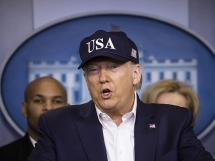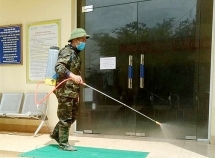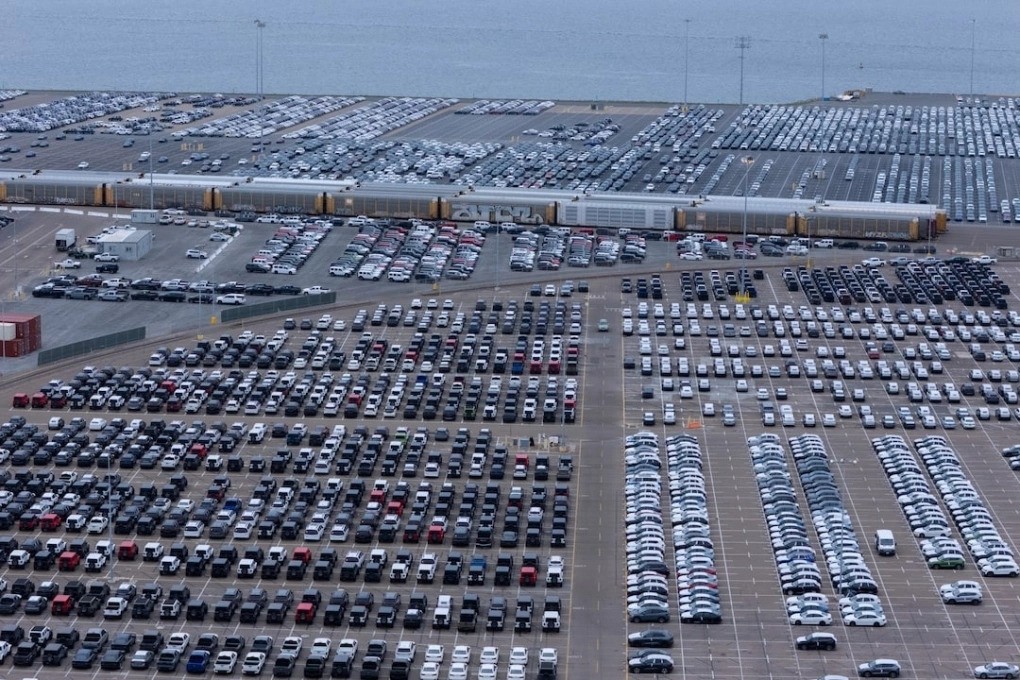Trump declares coronavirus outbreak a national emergency
| Donald Trump negative for coronavirus | |
| Service sector as bank rescue in COVID-19 | |
| Vietnam confirms 53rd COVID-19 case |
In a Rose Garden press conference, Trump said his declaration would free $50 billion in federal resources to combat the spread of the novel coronavirus and the respiratory disease it causes, which has sickened over 1,000 Americans and killed thousands more worldwide.
The declaration also instructs state governments to set up emergency operations centers; directs hospitals nationwide to activate emergency preparedness contingency plans; and allows health secretary Alex Azar to waive regulations that could hinder health professionals’ response capabilities.
The Trump administration, in conjunction with the tech giant Google, also said it will unveil a website that Americans can use to determine whether they are presenting Covid-19 symptoms, and whether they should seek testing. (Later on Friday, however, a news report indicated the promise was misleading: Google’s website will only be capable of directing patients in the San Francisco Bay Area to testing facilities.)
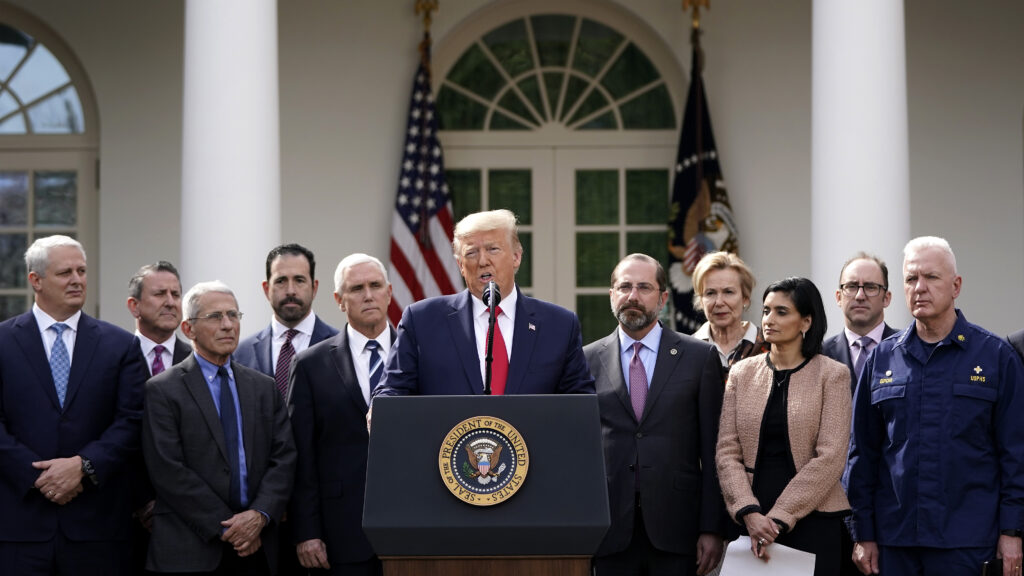 |
| President Donald Trump declared a 'national emergency' over COVID-19 at a news conference in the White House Rose garden on March 13. (Photo: Getty Images) |
Seema Verma, the administrator of the Centers for Medicare and Medicaid Services, said the agency would soon issue guidance directing nursing homes to prohibit nearly all visits that are not deemed medically essential.
Trump said his administration would relax rules that govern “critical care” hospitals. Under the emergency declaration, those hospitals would no longer be limited to 25-bed capacities or admit only patients who doctors expect would be discharged within 96 hours.
Trump also pledged that his administration, in conjunction with private-sector companies, would “vastly increase and accelerate” the availability and production of coronavirus test kits.
Asked whether he accepted blame for substantial shortages in test kits — and defective tests that the Centers for Disease Control and Prevention initially distributed — Trump said simply: “I don’t take responsibility at all.”
The move is the latest dramatic escalation of the Trump administration’s response to the novel coronavirus and the respiratory disease it causes, Covid-19. On Wednesday, Trump banned non-U.S. residents from entering the country from Europe — weeks following similar bans targeting China, Iran, and parts of South Korea and Italy.
Less than an hour after Trump left the Rose Garden podium, his administration formally issued the emergency declaration, which relies on the National Emergency Act — the same law that former president Barack Obama used to bolster his administration’s response to the H1N1 influenza pandemic of 2009.
The law grants the president and executive branch sweeping powers to act quickly and decisively to respond to an emergency, said James Hodge, a professor at Arizona State University who specializes in health law.
“If you had a National Emergency Act declaration, what that’s really saying to all federal agencies is: We need you to get in the game of responding, in real time, to everything that we need to do nationally,” Hodge said. “And that may include suspending or waiving key provisions of federal law that are inhibiting our response.”
Trump also issued an emergency declaration using the Stafford Act, which could allow the administration to mobilize the Federal Emergency Management Administration, Hodge said.
Such a declaration could serve as “a way to funnel more resources to states through FEMA, and also to invoke a series of federal powers that can be even more extensive than what you’ve seen done to date,” he said. “That’s predictable, because there’s a deep fund of some resources that FEMA can tap into immediately.”
The emergency declaration comes in the wake of Trump’s numerous attempts to downplay Covid-19’s severity. In recent weeks, he has argued that the seasonal flu causes more deaths than the coronavirus, described Democrats’ criticisms of his administration’s response as a “hoax,” and falsely claimed that any American seeking a test could receive one.
Trump’s move comes six weeks after health secretary Alex Azar declared the novel coronavirus a national public health emergency. The Obama administration first declared H1N1, or “swine flu,” a public health emergency in April 2009, when the U.S. had reported roughly 20 cases and no deaths. The World Health Organization declared H1N1 a pandemic in June 2009.
That October, as the crisis ballooned to claim over 1,000 American lives, Obama declared H1N1 a full-scale national emergency. In the end, the disease infected over 60 million people in the United States, and killed over 12,000.
Presidents commonly use emergency declarations to extend the powers of their administrations and of the federal government. Trump, controversially, has previously used the National Emergencies Act to pert funds from other government programs to building a wall on the U.S.-Mexico border. Obama used the same act to carry out a number of foreign policy actions, like imposing sanctions targeted at Somalian pirates or to punish Russia’s recent attempt to annex the disputed, formerly Ukrainian territory of Crimea. Numerous emergency declarations from past administrations remain active — including one, targeting Iran, that dates to 1979, during former president Jimmy Carter’s administration.
Beyond the legal and bureaucratic power that national emergency declarations can wield, it may prove most impactful simply by virtue of its source, said Wendy Parmet, a health policy and law professor at Northeastern University.
“There’s a lot of pragmatic stuff these declarations do, but the messaging and symbolic aspect obviously means more to come from the president,” she said. “Especially given the fact that over the course of the last two months, the president’s messaging has not been consistent.”
During the press conference, Trump also reversed course on his own plans to be tested for the coronavirus. Last week, he rode on Air Force One with a lawmaker who had recently been exposed. And last weekend, Trump was photographed standing next to an aide to Brazilian president Jair Bolsonaro who later tested positive for the virus.
Trump said he would “most likely” be tested. “Not for that reason,” he said, “but because I think I will do it anyway. Fairly soon. We’re working on that. We’re working on a schedule.”
 | How Vietnamese giants react to COVID-19 pandemic “The battle against COVID-19 is similar “kicking an important game when it rains”. You will lose immediately if you’re worried about getting wet. Besides fighting ... |
 | Vietnam's capital asks for closure of karaoke parlors, bars to curb COVID-19 Hanoi Chairman Nguyen Duc Chung asks at an emergency meeting Friday for bars, karaoke establishments and several tourist sites to close until the end of ... |
 | Vietnam to put off National High School Examination as coronavirus plays havoc Roughly 900,000 12 graders will take the annual National Exam for highschool graduation and university entrance on August 8-11, one month and a half later ... |
Recommended
 World
World
Trump’s Tariff Pause: A Strategic Move from “The Art of the Deal”?
 World
World
"Indian Navy's participation in AIKEYME exercise matter of great happiness": Admiral Dinesh Kumar Tripathi
 World
World
ASEAN and US Tariff Dilemma: Hybrid Approach to Global Trade Tensions
 World
World
Vietnam Affirms Its Active and Responsible Role at UNESCO
 World
World
US Imposes 125% Tariff on China, Pauses Tariffs for 90 Days on Over 75 Countries
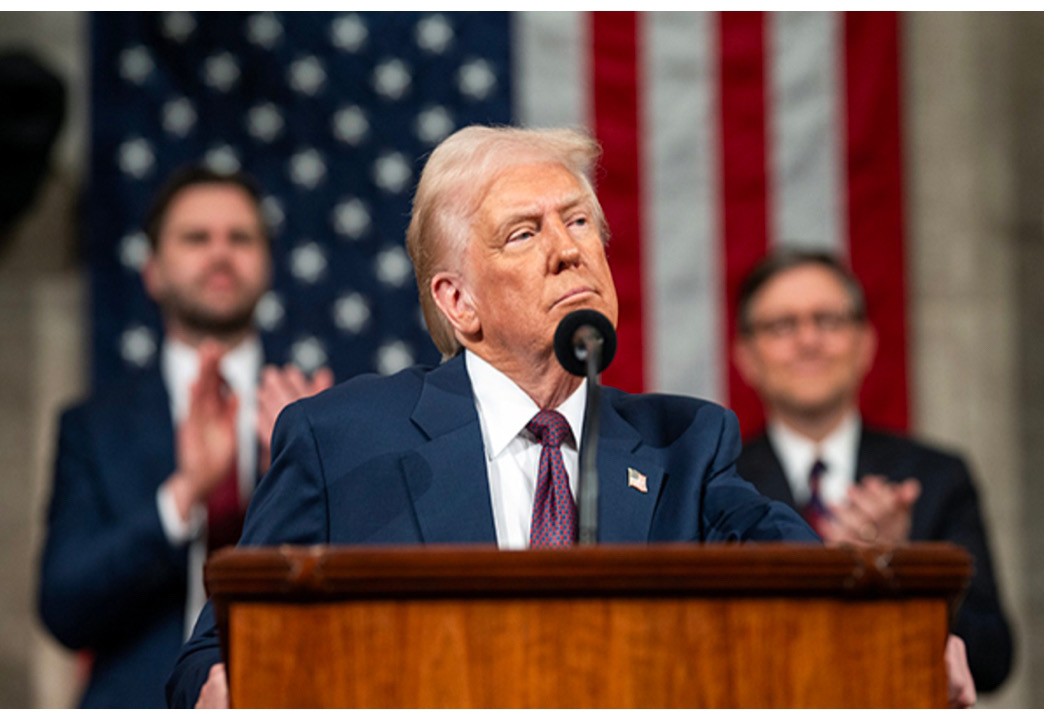 World
World
"Massive financial deficits with China, EU can only be cured with tariffs": Donald Trump
 World
World
Modi’s Sri Lanka Visit: A Diplomatic Triumph Amid Regional Tensions
 World
World

